Yay! It's Exploring with a Camera day! After a week off exploring in Chicago I'm ready to explore with you all here on the blog. Today we'll be diving into Found Texture in our images. At the end of the post you will find a link up to share your explorations of the topic over the next two weeks. There is a giveaway going along with this too! Keep reading to find out more.
It is no secret that I love texture in my images. I remember when I first started capturing images of texture for texture's sake in Italy. I didn't know what was going on, why I was drawn to capture images of peeling paint. It made no sense to me at the time! Now I know... it's all about the texture.
In this exploration, we will be focusing on Found Texture, texture that is already existing and captured with your camera, not added texture in post-processing. Adding texture layers in post-processing is a popular and very fun way of changing your image, but that's not the focus of this topic.
Let's learn more about Found Texture...
What is Texture?
By my definition, a texture is found on the surface of a form. (Form is the representation of a three-dimensional object. If you're not sure what I'm talking about, visit the past Exploring with a Camera: Finding Form post.) Here's an example to help: Consider an object in the shape of a sphere. The sphere is the form, but the surface of the sphere may be smooth, like the tomato shown below, or rough, like the orange. If you are struggling with the concept of texture vs. form, think of this way: If you can imagine an object to have a different surface texture, but the underlying form of the object stays the same, you are distinguishing texture and form.
The surface holds the texture, and the texture gives an additional dimension to our photographs, making us want to reach out and touch. Even though we can't physically touch the objects in an image, in our imagination we can. Texture adds a tactile nature to our experience of a photograph. We know what smooth feels like in real life, so the sensory experience of smooth is added to our experience of a photograph. The texture can draw us in as a participant in the image.
Texture is not only on the surface of forms in our images. Something large and flat serving as the background of the image, such as the wall in the lead-in photo, is also a surface that can have texture. In the case of the photo above, from Chicago, you see the texture of the brick.
How many types of texture are there? Let's see if we can make a list... smooth, rough, gritty, sticky, crumbly, bumpy, velvety, leathery, prickly... add yours to the list in the comments below. We can capture all of this texture and heighten the sensory experience in our images.
Sources of Found Texture
When you start to notice it, texture is everywhere! Nature is a great source for random texture. Since my subjects tend to be in urban environments, I looked for natural texture while camping at the beach a couple of weeks ago. I found everything from the glass-smooth texture of the receding waves, to the rough-yet-soft texture on the trunk of a tree.
Humans have learned from nature, and covered our man-made world with texture. Some of it is purposeful and functional, to hide flaws in a wall joint or increase traction in a floor. Some of the texture comes as part of the process, such as in bricks. Some of the man-made texture in our world is purely for artistic beauty. The texture in the floor tiles below was created to be both artistic and functional.
The one thing I've noticed, however, is that man-made texture doesn't have the same randomness as nature. Humans like patterns and processes, and our created textures usually have some sort of repeating pattern. Sometimes it is obvious, as in the floor image above, and sometimes not so obvious. Consider the texture that may be applied to a wall, there is a limit to the size and depth of the bumps you find. There is some randomness within the texture, but the overall texture is controlled.
When you add nature, in the form of time and weather, acting on the mad-made texture you get more natural randomness. I think that's why I, along with so many other photographers, like to photograph "urban decay." The added elements of time, weather and neglect increase the random texture in the images of everyday objects. It adds dimension and interest.
Capturing Texture
Now that you're seeing texture everywhere, what is the best way to capture it? As in capturing form, texture will appear differently in different light. Bright sunlight will create stronger shadows and light/dark highlight of texture, while shady or diffused light will create more subtle highlights of the texture. This wall below, found in Chicago, is an interesting study of light and texture since it's both in sun and shade. You can see how the sunlight enhances the texture.
You can see a similar effect in this image from Greece as well, as part of the wall is in sun and part is in shade. There are multiple textures in this image from more than just the light, however, with the texture of the wall, rope and door adding to the tactile nature of the image.
Along with light, color has a great impact on how we perceive texture in an image. Texture can be enhanced or overwhelmed by color. Color is useful to highlight texture when the light is non-directional or the texture is very subtle compared to the overall subject being photographed. In the case of the staircase in Portugal, the light is very diffuse so the texture of the wall is communicated by the color gradation. You can still "see" the texture, through the color variations.
Color can also dominate to the point that texture recedes in terms of visual information. Consider the image of the oranges shown earlier in this post. What do you notice first? Likely, the complementary color is the first thing you notice. The texture of the oranges, basket, vase and table are noticed second. To highlight or study texture, working with monochromatic images can help. The image of the driftwood below, converted to black and white, further enhances the texture of the splintery wood. The range of tones from light to dark are what provide the texture information, since the light is fairly even.
The image below from Burano has color, but it still monochromatic. This allows the form and texture in the image to be the subject. While diffuse, the light is still directional and highlights the texture and form.
Using Texture in Images
Now that you are thinking of what texture is, where to find it and how to capture it, let's look at a few different ways of using texture in images. One way of using texture is to capture it as the subject. This wall in Bologna was so interesting, I captured it just for the texture. Layers upon layers of different textures are visible.
The same with this wall in Greece, texture is the main subject. In both cases, I've included an architectural element to help ground the image in reality, but that is not necessary if you are capturing texture for texture's sake. Textures create great abstract images.
Often, I find that I use texture as the "backdrop" in the image. The lead-in photo is one example. In the case of this scene in Burano, the texture of the wall is a backdrop for the scene with the chair and pot.
This textured wall in Torcello is the backdrop against which the tree, window and architectural fragment are arranged. The wall is not the subject, but the texture enhances the interest in the image and ties the elements together.
The worn walls and steps contrast with the smooth, round pots, both in color and texture, in the image below from Varenna. The color and texture contrast, along with the lines of the steps, draw your eye directly to the pots of pretty flowers.
Summary
It's time to start exploring Found Texture on your own! Here's a quick review of the topics covered:
- What: Texture is found on the surface of form, and gives a tactile dimension to images.
- Sources: Nature, man-made and aged-man-made objects and surfaces are all possible sources of texture.
- How: Light along with color (presence or absence) and tone can be used to convey the texture.
- Ways to use: Texture can be the subject, a backdrop or used for contrast in an image.
There is so much more to texture, I look forward to learning from you as you share your images! You can link in below, the link up will be open through 3-November. As an added bonus, I am giving away a set of my "Texture" postcards! When you link in your texture image, you will be entered in the drawing to win.
FYI - Links will be moderated. Please use a permalink, ensure that your linked image is on topic, and include a link back to this site in your post through the Exploring with a Camera button (available here) or a text link. Thanks!

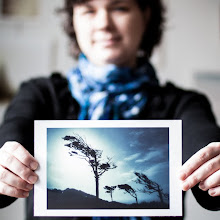






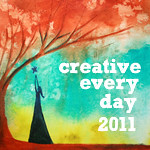



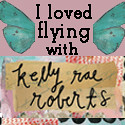

























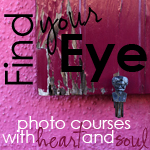
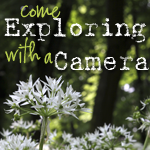

These are great shots, I'll be looking for some texture in the next week or so!
ReplyDeleteKat - thanks again for another informative and inspiring tutorial! I too love texture and those rough edges are just so darn intriguing! I can't wait to post some of my recent captures!
ReplyDeleteKat, your photos are always so yummy!!! I am drawn to texture as well - there is so much out there! If I have time I'll go through my archive and perhaps I can link up. Your Exploring with the camera is ALWAYS very inspiring!!
ReplyDeleteKat ~ Photos are excellent ~ filled with texture and very creative ~ Thanks for hosting this ~ I have one on Mondays ~ still 'getting the hang' hosting a linky ~ Have a great weekend ! ^_^
ReplyDeleteYour photos are so inspiring! Thank you for sharing iformation! Have a great weekend!
ReplyDeleteThanks for your inspiring blog! Here is a texture i found on the surface of a pond surrounded by trees.
ReplyDeletehttps://www.facebook.com/photo.php?fbid=184316278260124&set=a.184315561593529.43713.100000452602682&type=3&theater
Or if the link above doesn't work:
ReplyDeletehttps://www.facebook.com/photo.php?fbid=184316278260124&l=f08b0f1452
Some really beautiful photos here Kat. Great post!
ReplyDeletekat, this is amazing!
ReplyDeletei just finished a 'documentary' series of some found texture: a crumpled piece of waxy paper lying along the riverbank where i walk my dogs each day....
everytime i passed i took new shots of the folds, tears, colors, creases, decay, on sunny days and in the pouring rain and stormy weather.... it was fascinating
i linked in to your website with my flickr page. i really love the way flickr displays the 54 photos in the thumbnail overview, all different views/aspects of the same piece of paper....
thanks for making this a theme!
I come away inspired every time I drop by to read a post. Thanks!
ReplyDeleteLots of your photos Kat have inspired me in the past to go and seek texture for my photos.
ReplyDelete